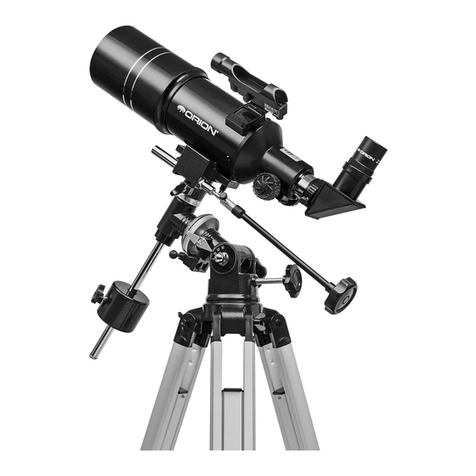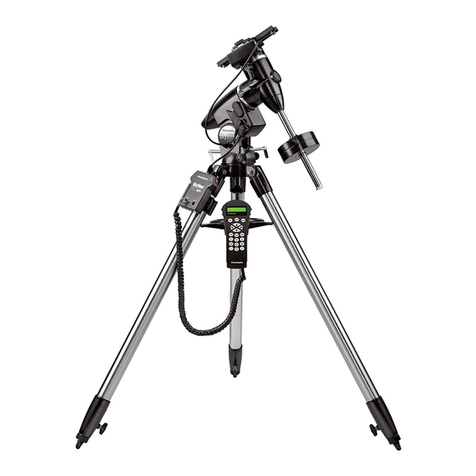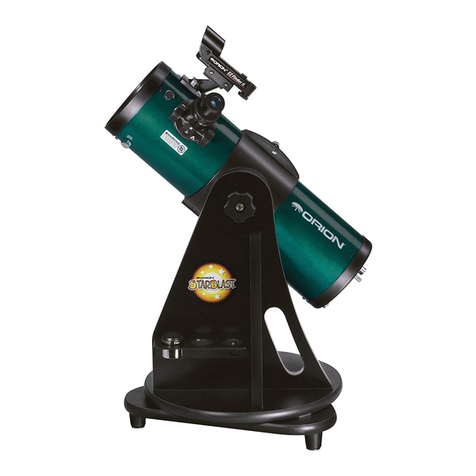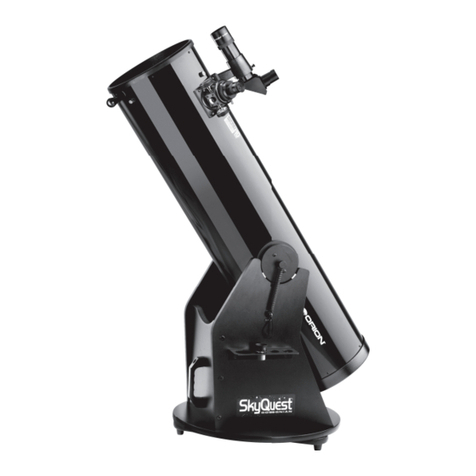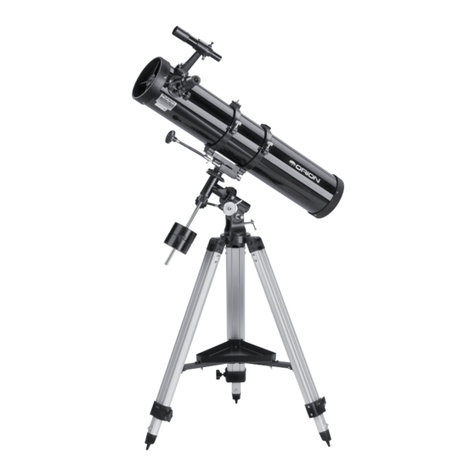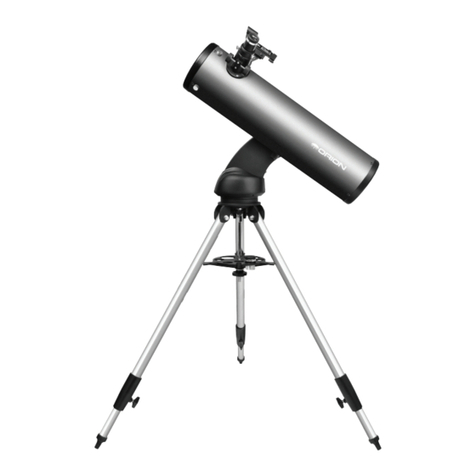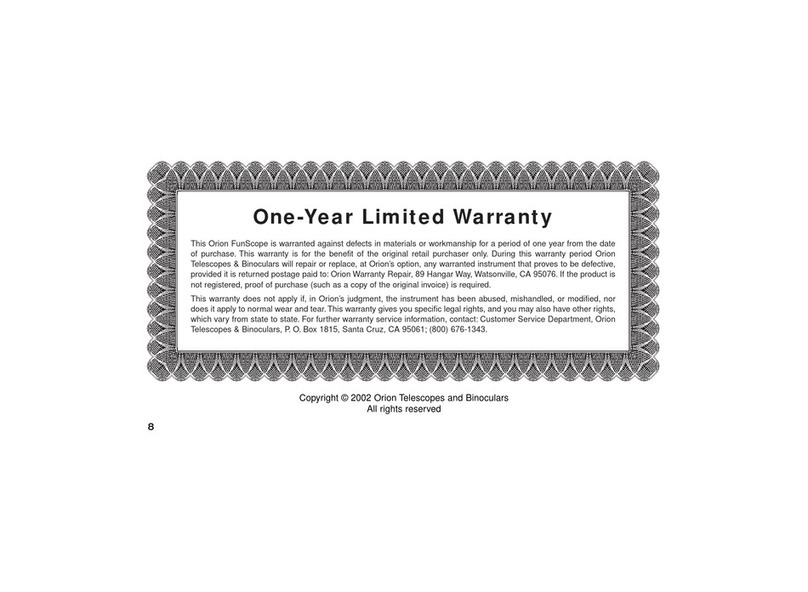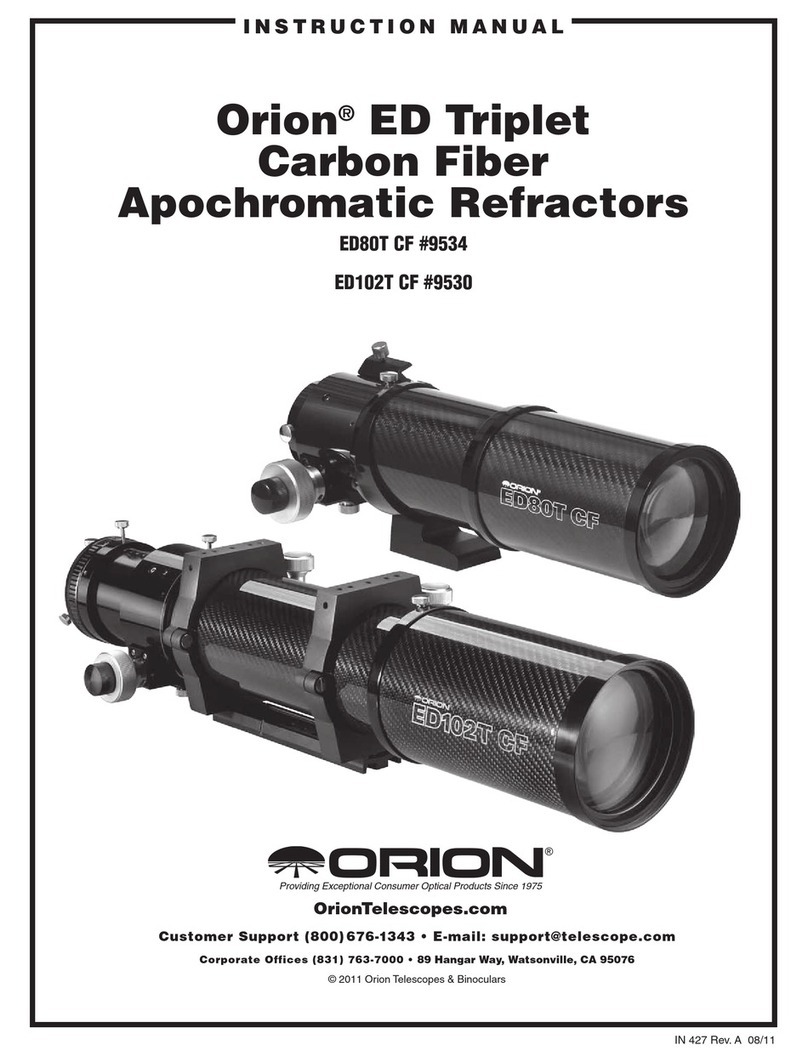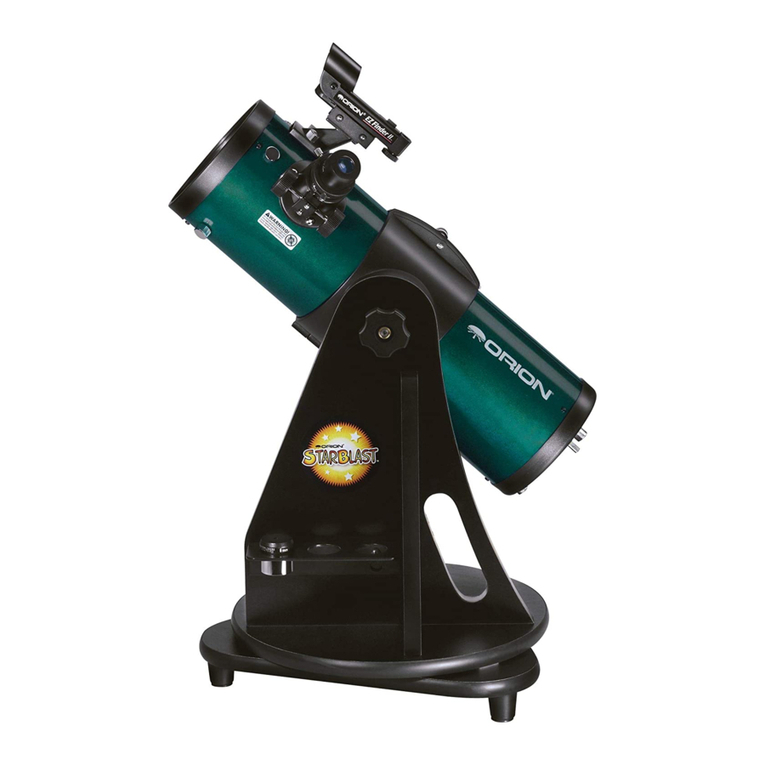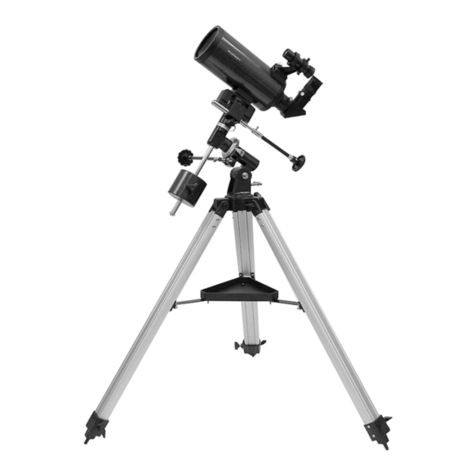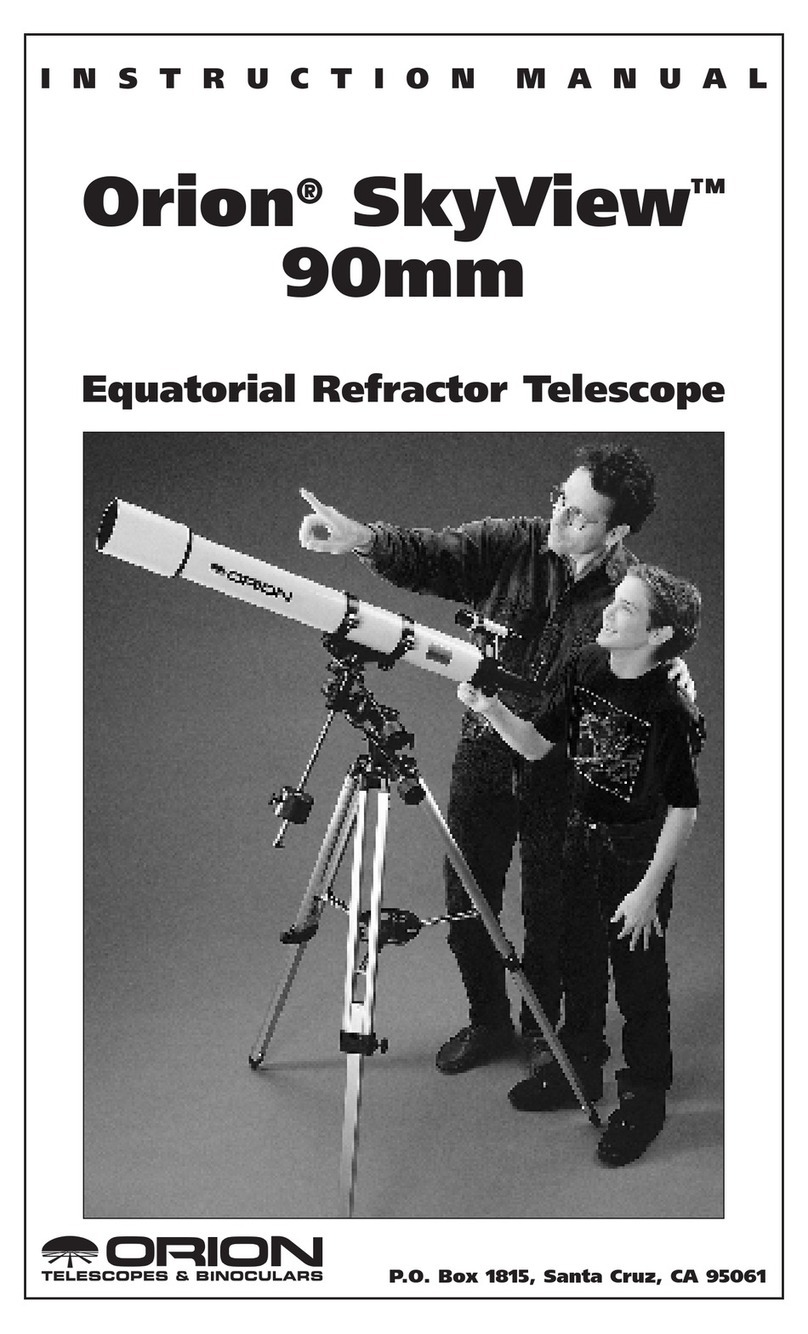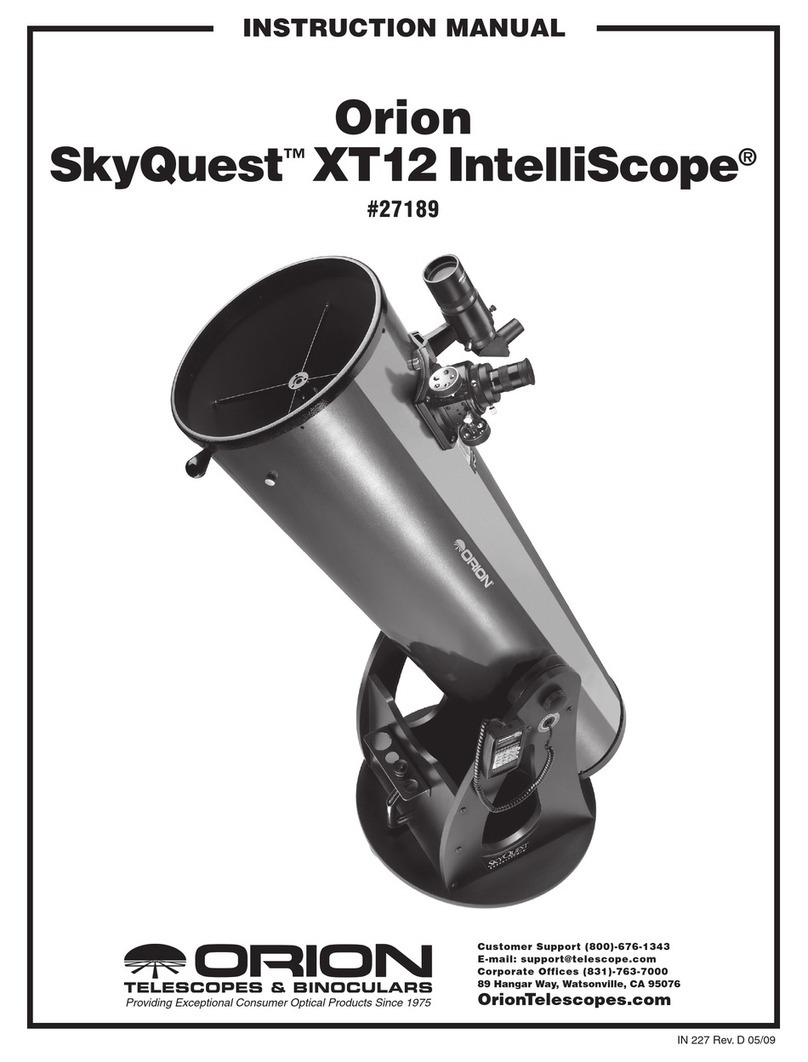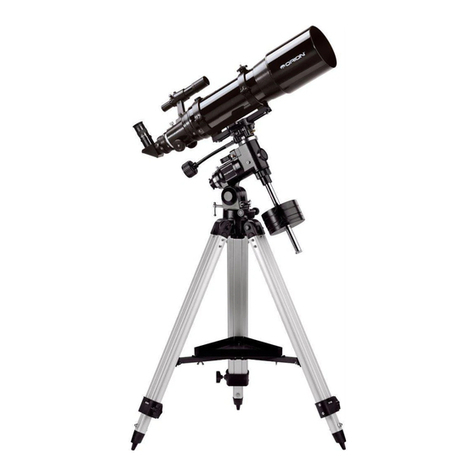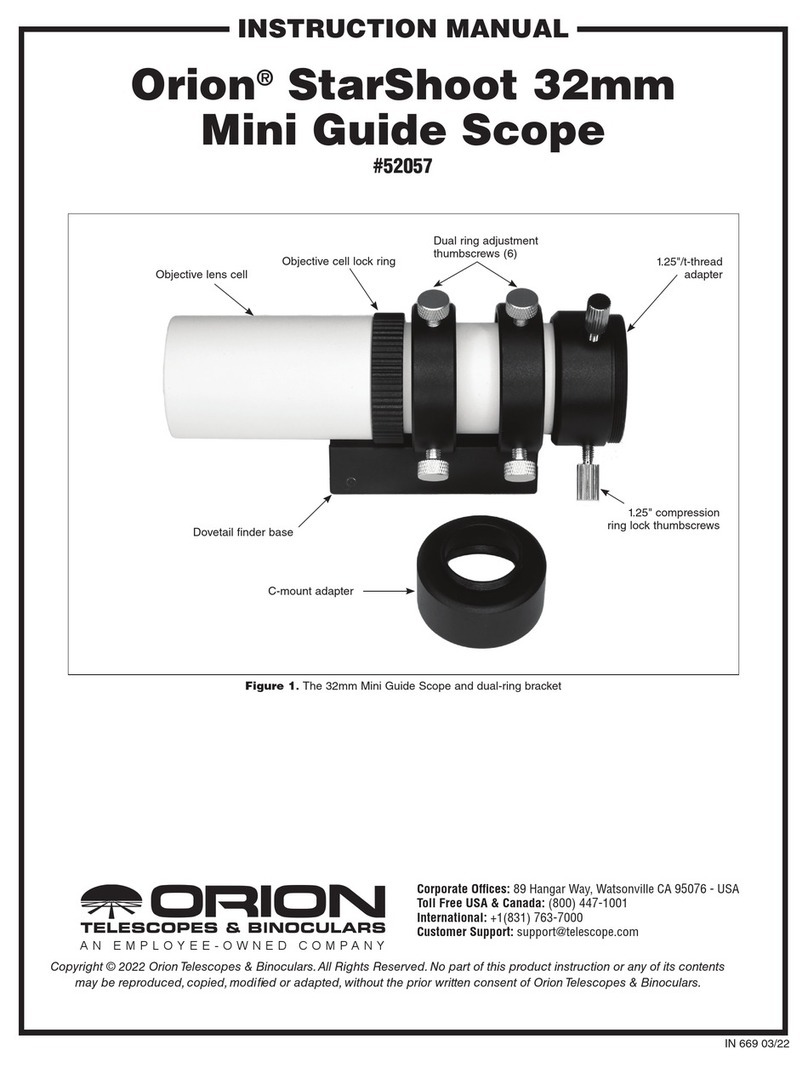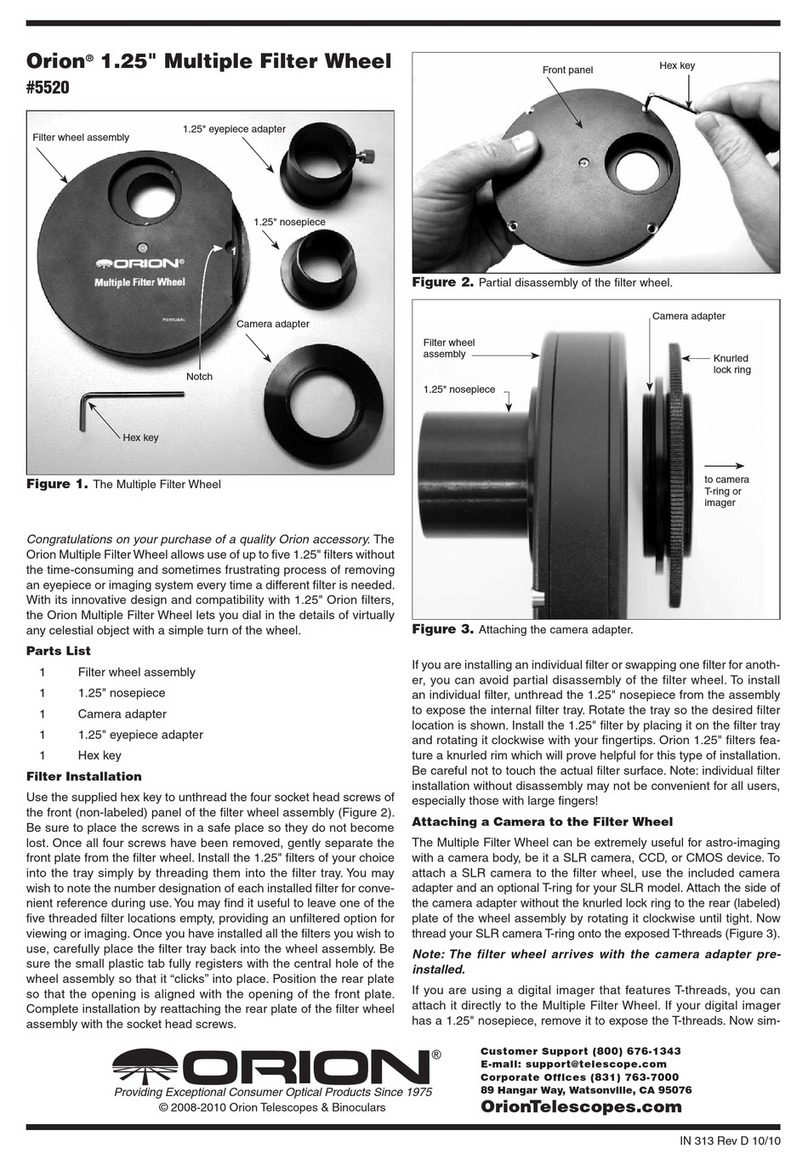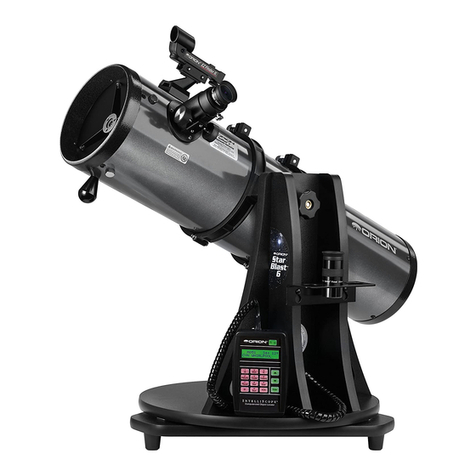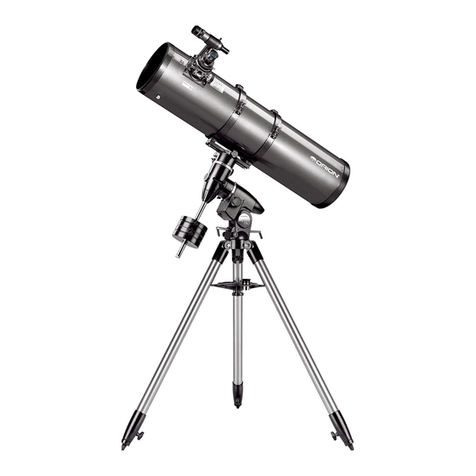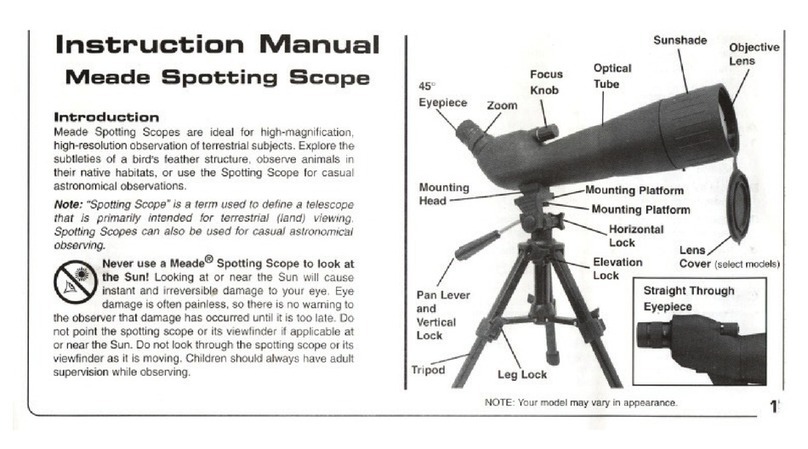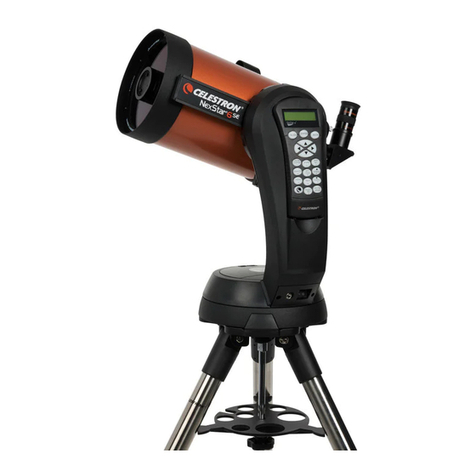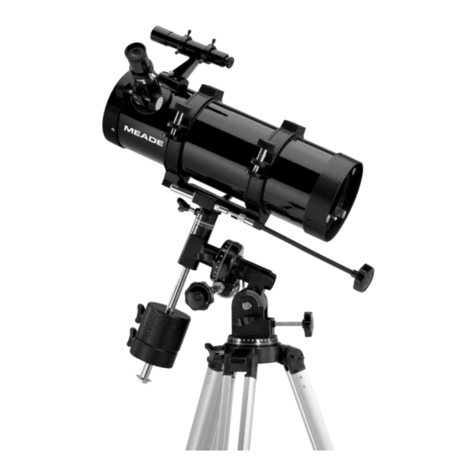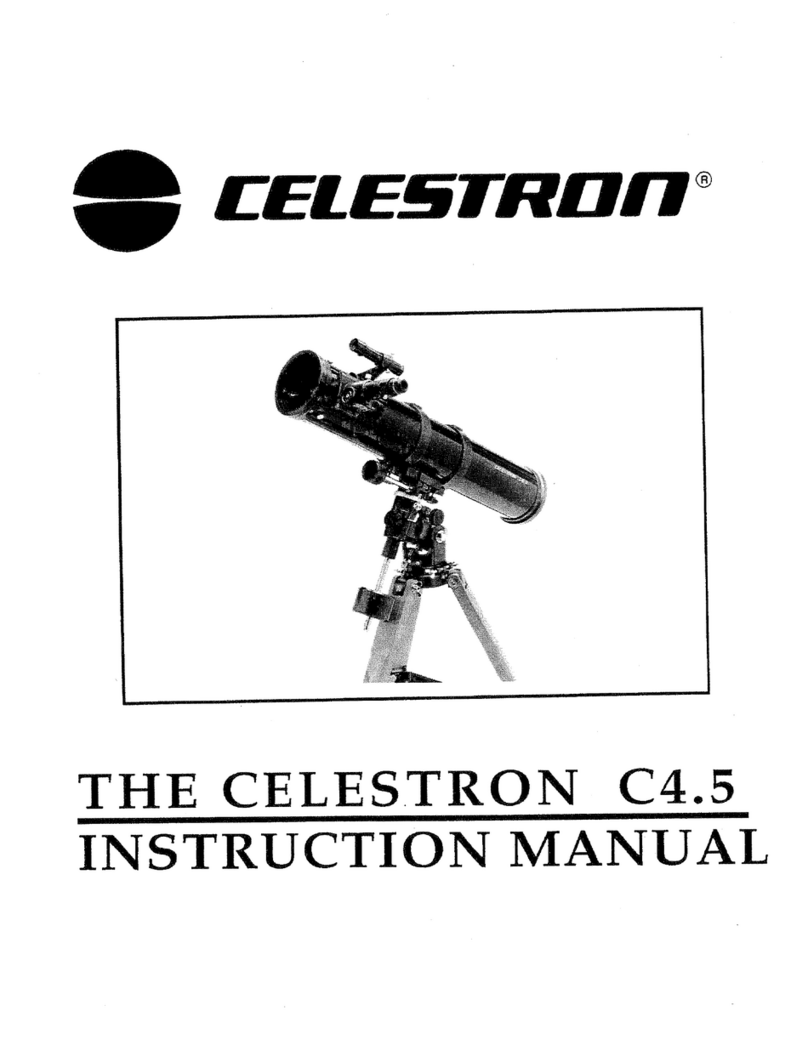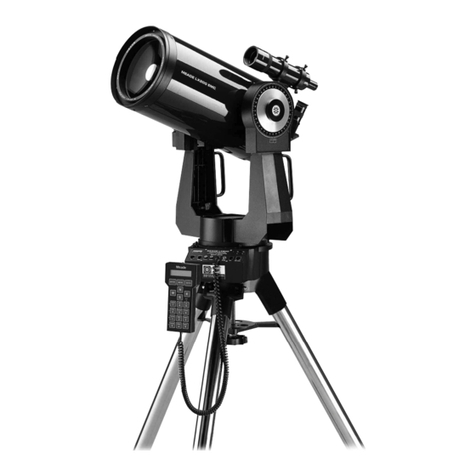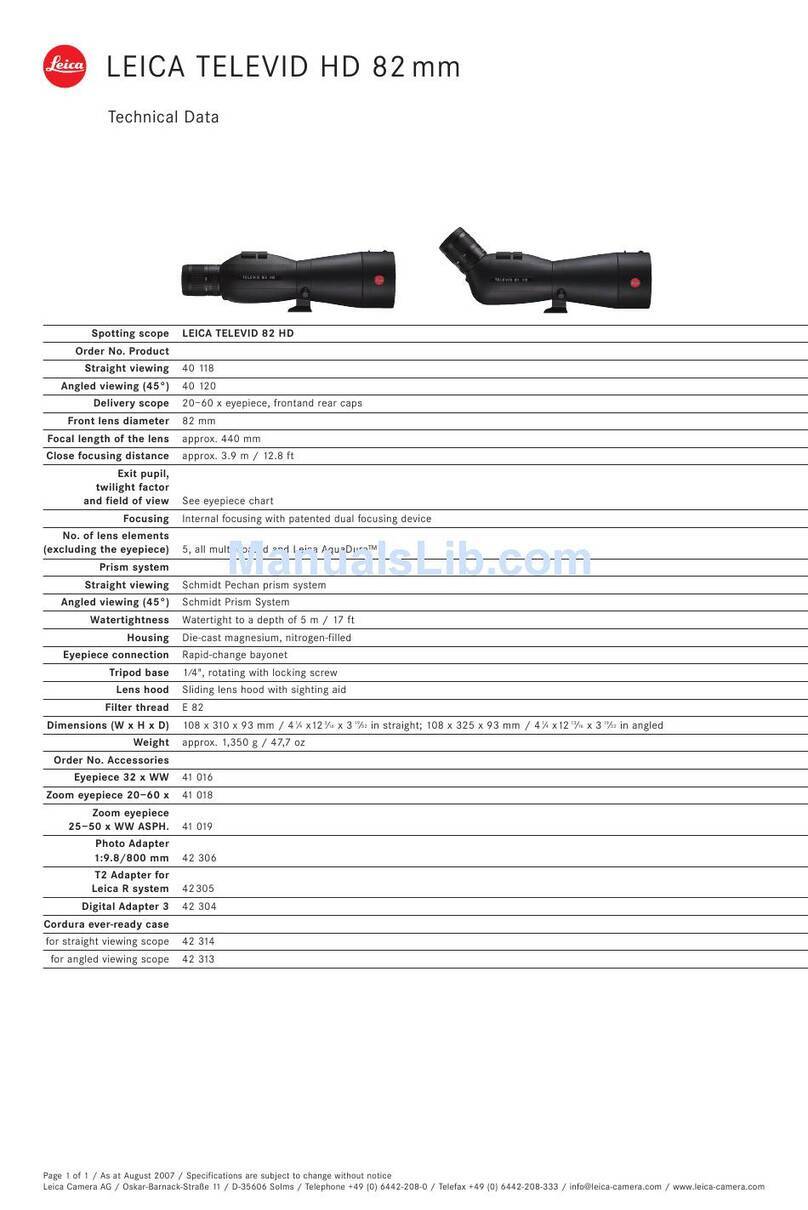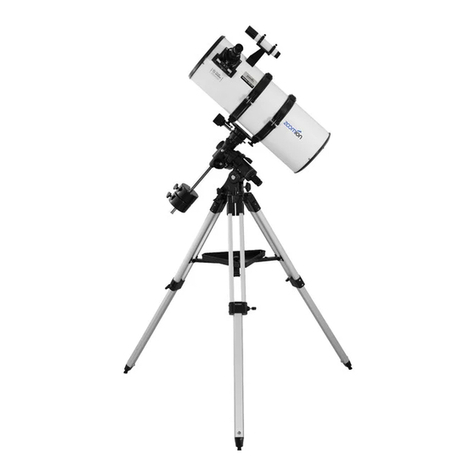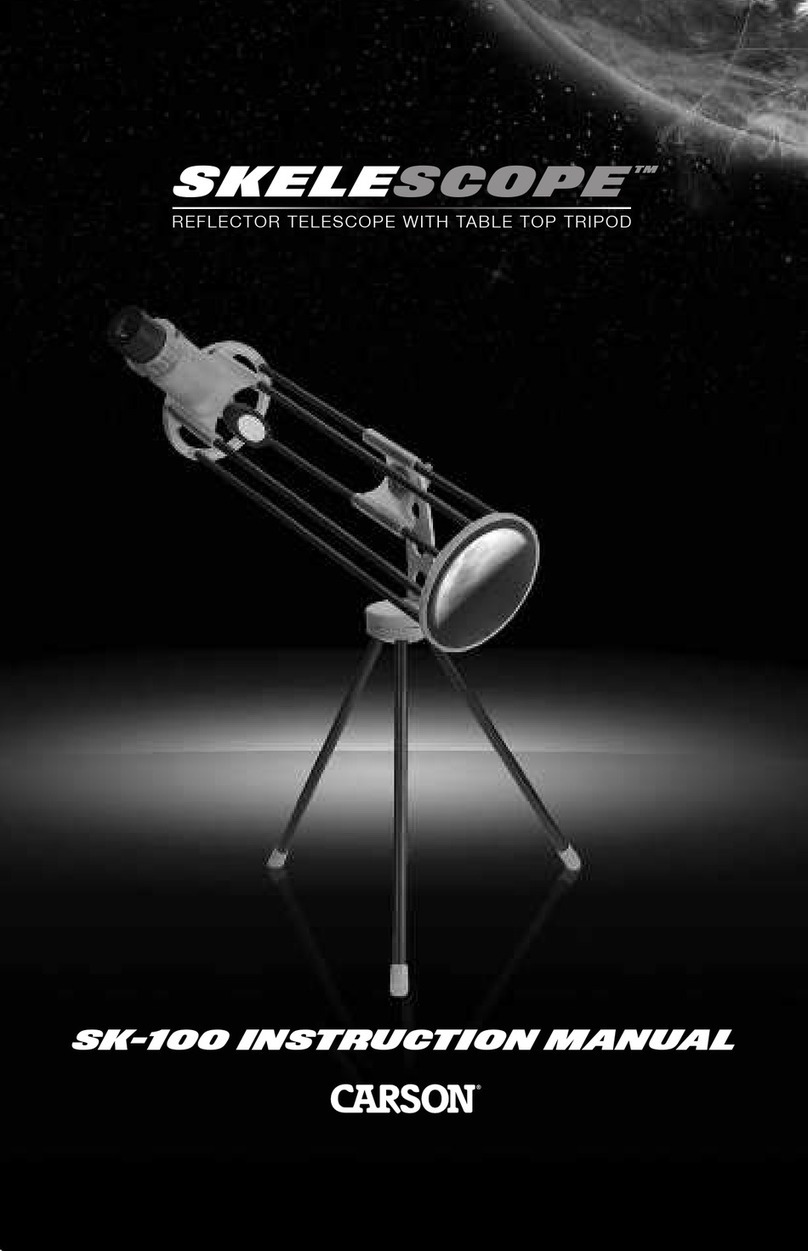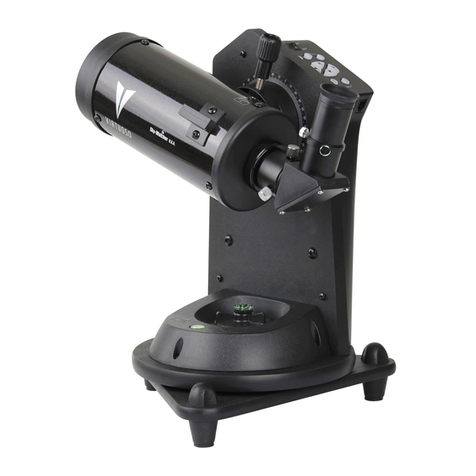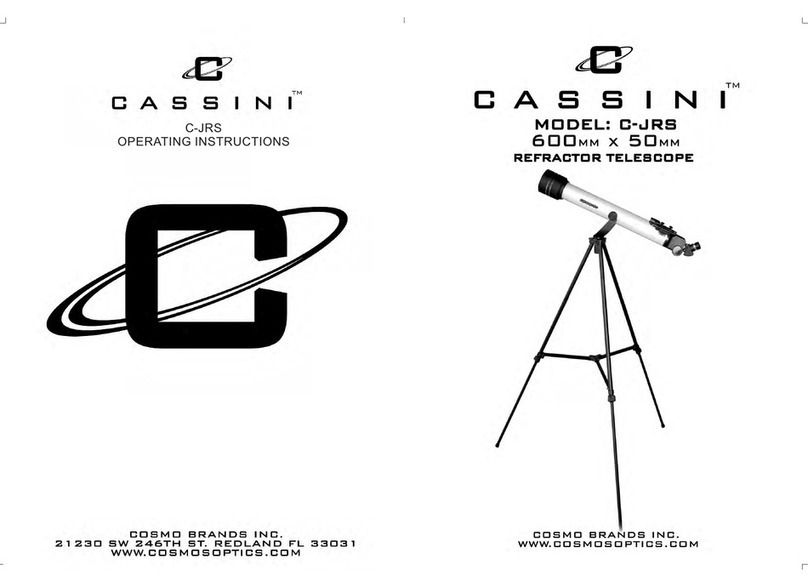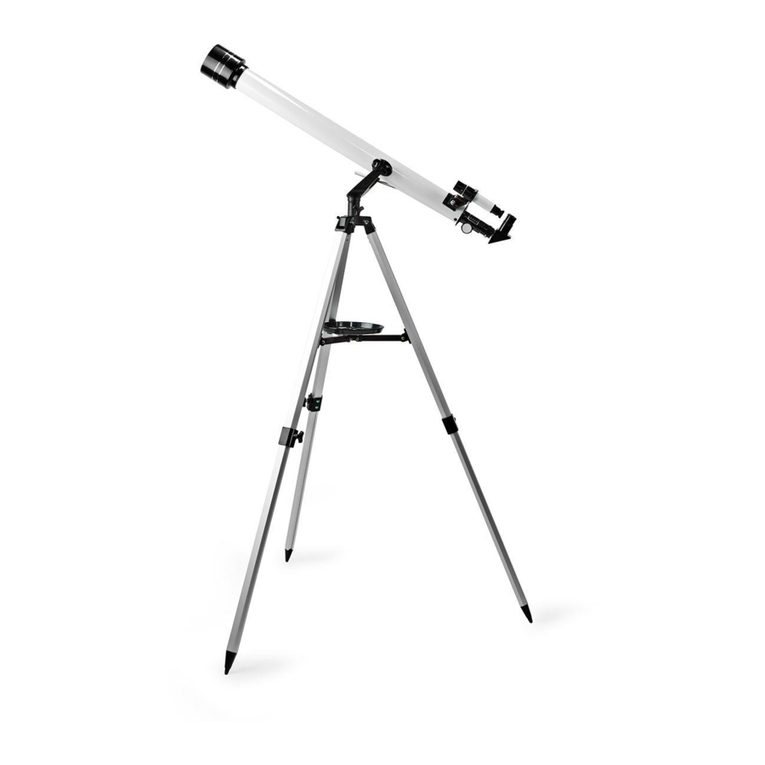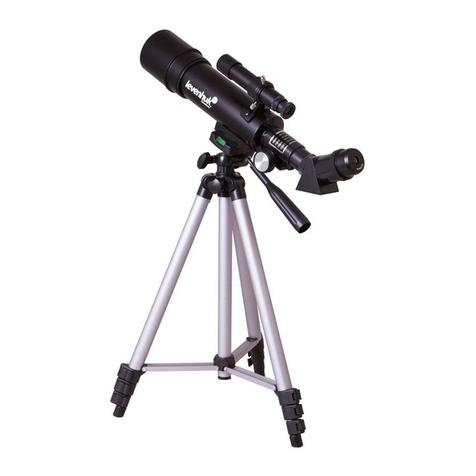
9
7. The aluminum eyepiece rack holds three 1.25" eyepieces
and one 2" eyepiece in a convenient place on the base,
within easy reach while you are observing. To attach the
eyepiece rack, locate the two small pilot holes on the
front panel. Thread the small Phillips-head screws into
the holes until the screw head is about 1/8” from the
panel’s surface. Now place the wide part of the “keyhole”
on the eyepiece rack over the screw heads and slide it
downward so the narrow portion of the keyhole is under
the screws. Tighten the screws to secure the rack in
place. See Figure 11.
8. The XXg base includes a bracket that holds the hand
controller when it’s not in use. The bracket mounts on the
altitude motor housing (Figure 12). Locate the two small
pilot holes and attach the bracket using the small screws
included with the bracket until just barely tight. Do not
over-tighten these screws or you’ll strip the holes!
9. Now install the azimuth motor connection cable. It is a flat
cable that has an 8-pin RJ-45 plug on both ends. Plug
one end into the jack on the azimuth motor housing on
the top baseplate; plug the other end into the jack labeled
AZ MOTOR on the altitude motor housing (Figure 12).
10. Finally, connect the GoTo hand controller. Plug the wide
RJ-45 connector on the coiled hand controller cable into
the corresponding port on the hand controller. Plug the
smaller RJ-12 connector into the port labeled HC on the
altitude motor housing (Figure 12).
Initial Assembly of the Optical Tube
The primary mirror is shipped in its metal support cell sepa-
rately from the optical tube, to prevent possible damage to
both the mirror and the optical tube. Once the primary mirror
is installed, there will be no need to remove it except if clean-
ing is necessary (see Section 11, “Care & Maintenance”).
First, the mirror will be installed in the tube, then the upper
and lower sections of the tube will be assembled with the
truss poles.
The primary mirror of the XX12g has the typical flat back side,
whereas the thinner primary of the XX14g has a molded,
convex back with raised “spokes” radiating from the center
for added strength. The reduced-mass design of the XX14g’s
mirror allows more-efficient equilibration to outdoor ambient
temperature. Both mirrors have a small adhesive ring placed
in the exact center; it aids in achieving a precise collimation,
which will be covered later. The ring should not be removed.
1. To install the mirror cell in the optical tube, the rear end
ring attached to the lower section of the optical tube must
first be removed. This is done by unthreading and remov-
ing the six Phillips-head screws (eight on the XX14g) that
attach the end ring to the tube (Figure 13), and then pull-
ing the end ring off of the tube.
Warning: Once the rear end ring is removed from the tube,
the raw edge of the tube itself will be exposed. Be careful
not to cut or otherwise hurt yourself on the tube’s edge.
Also, be careful not to pinch your fingers when attaching
the assembled mirror cell onto the tube.
2. For the XX14g (only), thread the three counterweight
mounting bolts into their respective holes in the rear end
ring, as shown in Figure 14. Use an adjustable wrench
or a 16mm crescent wrench to tighten the bolts. Do not
install the counterweights yet.
Figure 13. To remove the rear end ring, unthread the Phillips
screws that attach it to the tube.
Figure 14. Thread the three hex-head counterweight mounting
bolts (XX14g only) into the holes in counterweight support plates as
shown. Tighten using an adjustable or 16mm crescent wrench.

